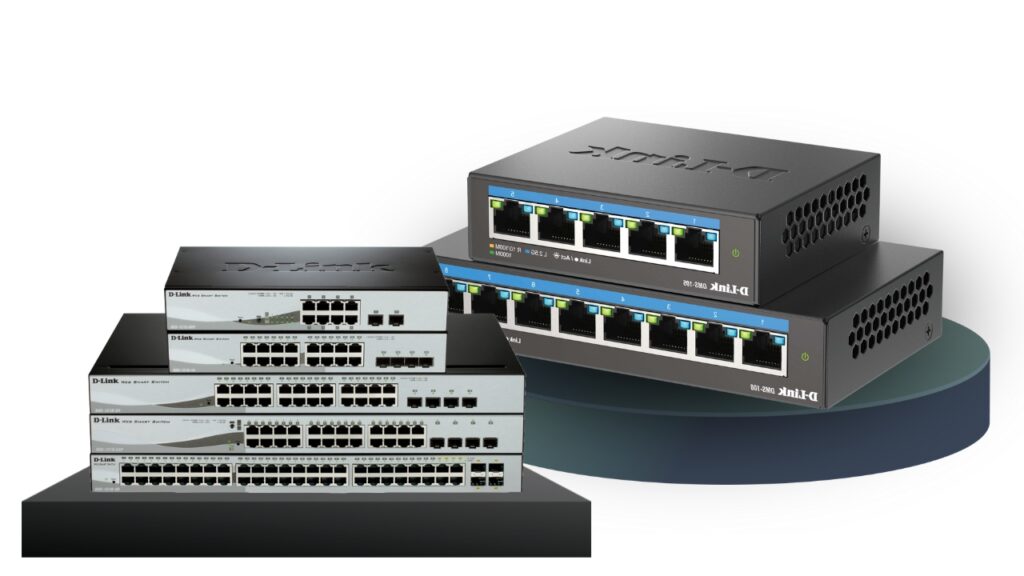If you buy network switches without understanding your specific needs, you may waste money on unnecessary features. It’s important to know exactly what your business requires to make an informed decision.
This way, you can get the best switch for your network without overspending on features you don’t need.
11 Key Factors to Consider When Choosing a Network Switch for Your Business
Port Speed
Choose the switch based on your business needs. If your business requires high-speed data transfer, opt for 10GbE or 40GbE switches. For standard usage, Gigabit Ethernet switches (10/100/1000 Mbps) will be sufficient.
Number of Ports
The number of ports you need depends on how many devices will be connected, such as printers, scanners, computers, etc. Consider future growth and make sure your switch can handle additional devices as your business expands.
Power over Ethernet (PoE)
PoE switches provide power to connected devices like IP cameras, phones, and wireless access points through the Ethernet cable. This eliminates the need for separate power sources, making it easier to manage and reducing cable clutter.
Management Type
There are two primary types of switches: managed and unmanaged. Managed switches allow customization and offer features like network monitoring, control, and configuration. Unmanaged switches are plug-and-play, simpler to set up and require less technical expertise.
Scalability
Consider your future business growth. If you plan to expand, choose a switch with scalability options so it can handle more devices and traffic as your network grows.

Energy Efficiency
Energy-efficient switches can reduce power consumption and lower your operational costs. Look for switches with Energy Efficient Ethernet (EEE) technology to optimize power use.
Security
Choose switches with security features like VLAN (Virtual Local Area Network) support, access controls, and encryption if your business needs to protect sensitive data.
Quality of Service (QoS)
QoS features ensure that critical applications, like video conferencing or voice calls, get priority bandwidth, preventing network delays.
Budget
Set a budget based on your business needs. Avoid spending on unnecessary features you don’t need, and invest in switches that provide the right balance of performance and cost.
Forwarding Rate
The forwarding rate of a switch determines how much data it can process per second. For high-performance networks, make sure the switch has a high forwarding rate to handle large amounts of data efficiently.
Business Size and Growth Potential
Larger businesses or those with high growth potential should consider enterprise-grade switches, which offer more features and support larger, more complex networks.
Conclusion
These 11 factors are enough to guide your investment in network switches.
Ready to invest in network switches today?
Contact us with your requirements, and we will get back to you.



